Aidong Adam Ding
MoEcho: Exploiting Side-Channel Attacks to Compromise User Privacy in Mixture-of-Experts LLMs
Aug 20, 2025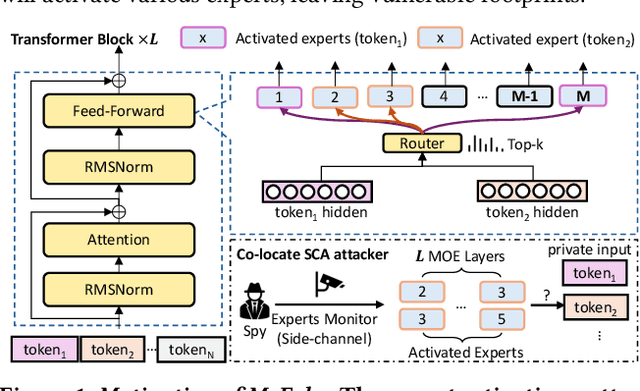

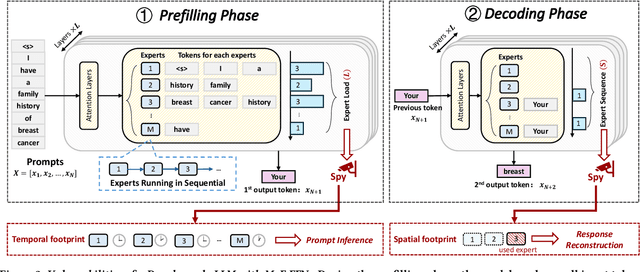

Abstract:The transformer architecture has become a cornerstone of modern AI, fueling remarkable progress across applications in natural language processing, computer vision, and multimodal learning. As these models continue to scale explosively for performance, implementation efficiency remains a critical challenge. Mixture of Experts (MoE) architectures, selectively activating specialized subnetworks (experts), offer a unique balance between model accuracy and computational cost. However, the adaptive routing in MoE architectures, where input tokens are dynamically directed to specialized experts based on their semantic meaning inadvertently opens up a new attack surface for privacy breaches. These input-dependent activation patterns leave distinctive temporal and spatial traces in hardware execution, which adversaries could exploit to deduce sensitive user data. In this work, we propose MoEcho, discovering a side channel analysis based attack surface that compromises user privacy on MoE based systems. Specifically, in MoEcho, we introduce four novel architectural side channels on different computing platforms, including Cache Occupancy Channels and Pageout+Reload on CPUs, and Performance Counter and TLB Evict+Reload on GPUs, respectively. Exploiting these vulnerabilities, we propose four attacks that effectively breach user privacy in large language models (LLMs) and vision language models (VLMs) based on MoE architectures: Prompt Inference Attack, Response Reconstruction Attack, Visual Inference Attack, and Visual Reconstruction Attack. MoEcho is the first runtime architecture level security analysis of the popular MoE structure common in modern transformers, highlighting a serious security and privacy threat and calling for effective and timely safeguards when harnessing MoE based models for developing efficient large scale AI services.
Graph in the Vault: Protecting Edge GNN Inference with Trusted Execution Environment
Feb 20, 2025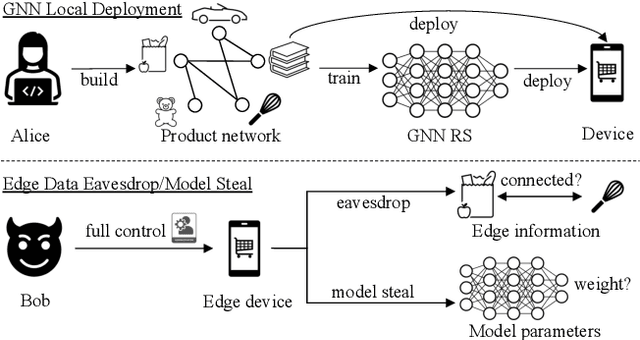

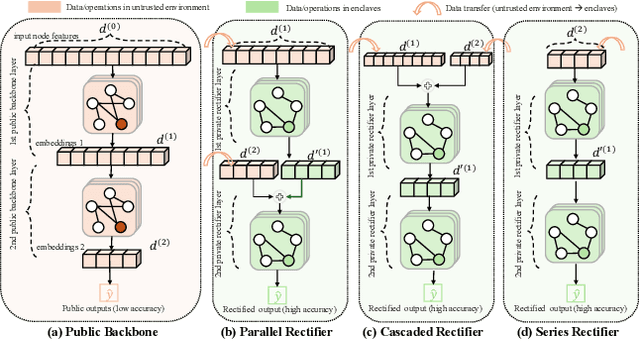
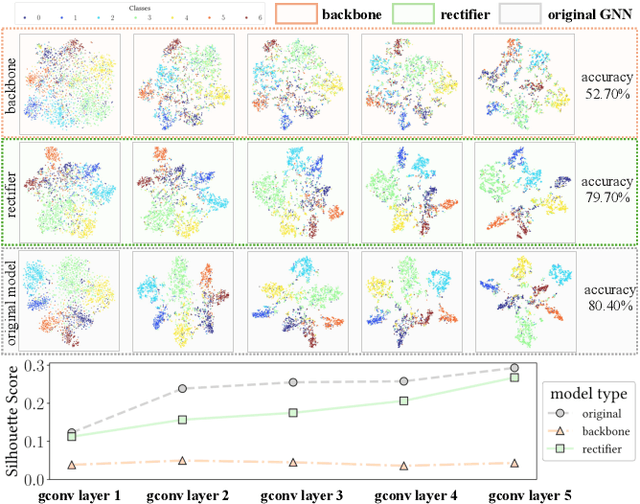
Abstract:Wide deployment of machine learning models on edge devices has rendered the model intellectual property (IP) and data privacy vulnerable. We propose GNNVault, the first secure Graph Neural Network (GNN) deployment strategy based on Trusted Execution Environment (TEE). GNNVault follows the design of 'partition-before-training' and includes a private GNN rectifier to complement with a public backbone model. This way, both critical GNN model parameters and the private graph used during inference are protected within secure TEE compartments. Real-world implementations with Intel SGX demonstrate that GNNVault safeguards GNN inference against state-of-the-art link stealing attacks with negligible accuracy degradation (<2%).
Non-transferable Pruning
Oct 10, 2024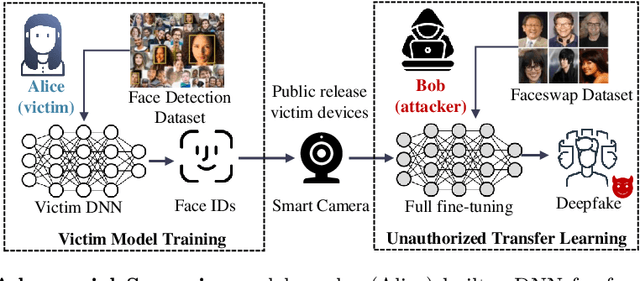
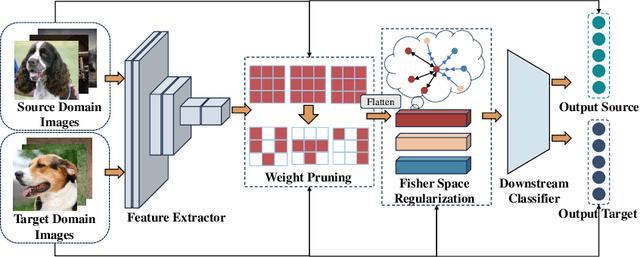

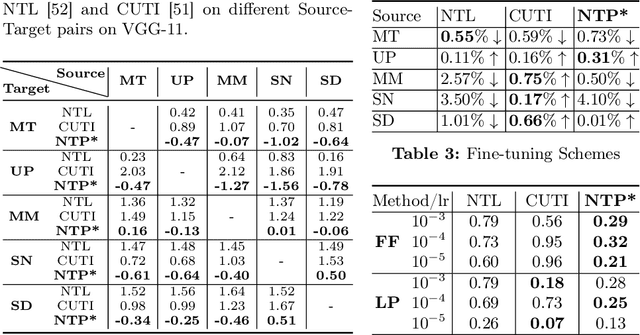
Abstract:Pretrained Deep Neural Networks (DNNs), developed from extensive datasets to integrate multifaceted knowledge, are increasingly recognized as valuable intellectual property (IP). To safeguard these models against IP infringement, strategies for ownership verification and usage authorization have emerged. Unlike most existing IP protection strategies that concentrate on restricting direct access to the model, our study addresses an extended DNN IP issue: applicability authorization, aiming to prevent the misuse of learned knowledge, particularly in unauthorized transfer learning scenarios. We propose Non-Transferable Pruning (NTP), a novel IP protection method that leverages model pruning to control a pretrained DNN's transferability to unauthorized data domains. Selective pruning can deliberately diminish a model's suitability on unauthorized domains, even with full fine-tuning. Specifically, our framework employs the alternating direction method of multipliers (ADMM) for optimizing both the model sparsity and an innovative non-transferable learning loss, augmented with Fisher space discriminative regularization, to constrain the model's generalizability to the target dataset. We also propose a novel effective metric to measure the model non-transferability: Area Under the Sample-wise Learning Curve (SLC-AUC). This metric facilitates consideration of full fine-tuning across various sample sizes. Experimental results demonstrate that NTP significantly surpasses the state-of-the-art non-transferable learning methods, with an average SLC-AUC at $-0.54$ across diverse pairs of source and target domains, indicating that models trained with NTP do not suit for transfer learning to unauthorized target domains. The efficacy of NTP is validated in both supervised and self-supervised learning contexts, confirming its applicability in real-world scenarios.
GraphCroc: Cross-Correlation Autoencoder for Graph Structural Reconstruction
Oct 04, 2024



Abstract:Graph-structured data is integral to many applications, prompting the development of various graph representation methods. Graph autoencoders (GAEs), in particular, reconstruct graph structures from node embeddings. Current GAE models primarily utilize self-correlation to represent graph structures and focus on node-level tasks, often overlooking multi-graph scenarios. Our theoretical analysis indicates that self-correlation generally falls short in accurately representing specific graph features such as islands, symmetrical structures, and directional edges, particularly in smaller or multiple graph contexts. To address these limitations, we introduce a cross-correlation mechanism that significantly enhances the GAE representational capabilities. Additionally, we propose GraphCroc, a new GAE that supports flexible encoder architectures tailored for various downstream tasks and ensures robust structural reconstruction, through a mirrored encoding-decoding process. This model also tackles the challenge of representation bias during optimization by implementing a loss-balancing strategy. Both theoretical analysis and numerical evaluations demonstrate that our methodology significantly outperforms existing self-correlation-based GAEs in graph structure reconstruction.
 Add to Chrome
Add to Chrome Add to Firefox
Add to Firefox Add to Edge
Add to Edge